2024
-
Week 3
Mon. June 3Used fiberglass mesh for cut outs. tried spray paint to see what would happen to the optical illusion. I think I like the natural look of the mesh the best. I am more interested in the shadows and surface of the piece rather than the forms, unlike the paper pieces where the form…
-
Week 2
Started working on my own pieces focusing on kirigami with paper. I tried w felt and fabric but it was really hard to cut and get the intricate details as well as get the right tension. Flocked paper, spray painted paper, used dirt to create texture on paper liquid graphite on resin and stone sample-…
-
Week 1
Tues. May 21Resin on silk, cotton, lace, fabric. Latex on silk, cotton, stretched fabric. Latex is Wed. May 22Mixed latex with PVA pigment, started diluting latex with water to be able to dip objects and pour into silicone molds. Heidi Bucher Thurs. May 23Experimented with different ways of putting latex on plaster by letting the…
-
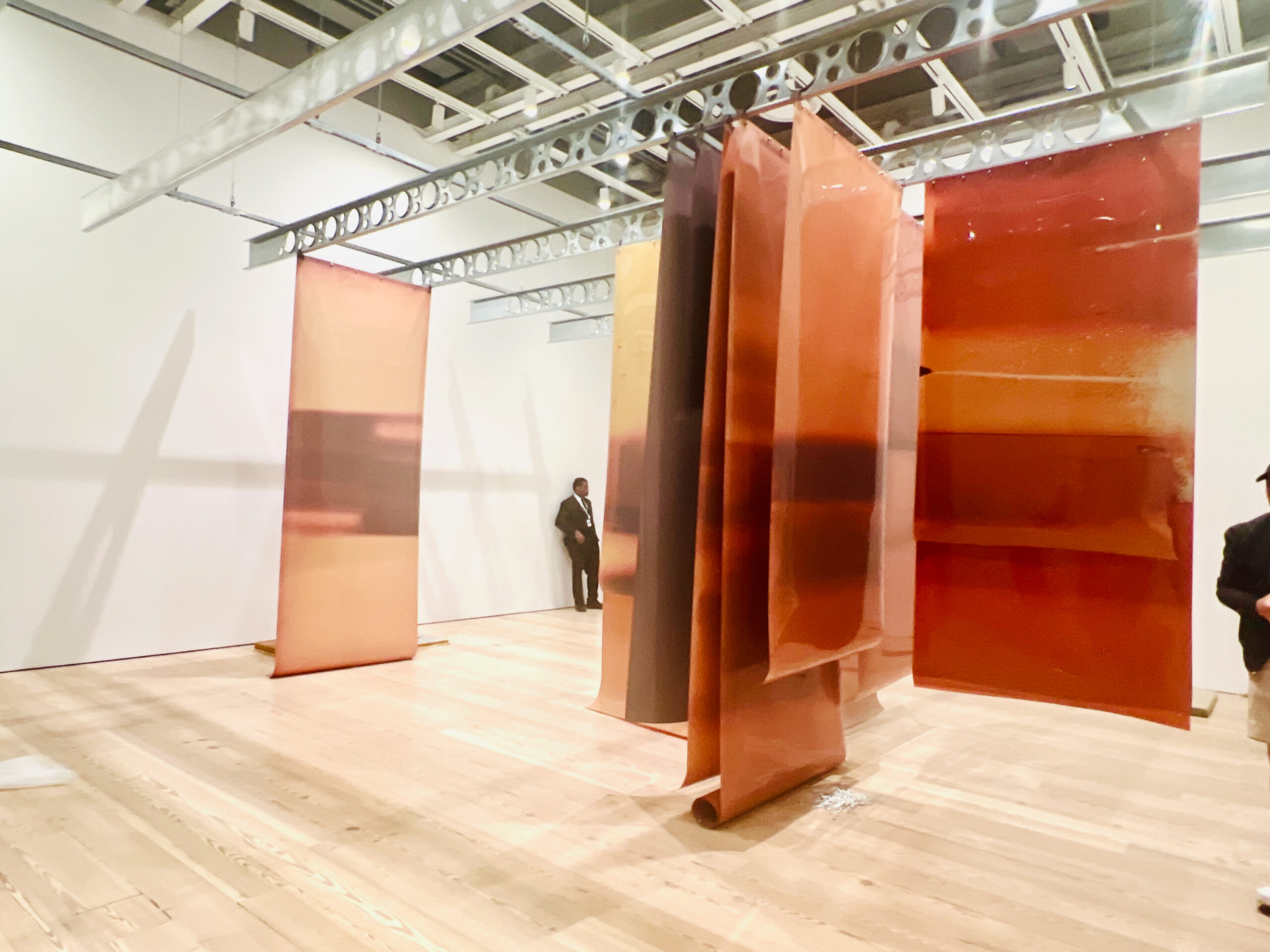
Lotus L. Kang
Lotus L. Kang’s In Cascades invites viewers into a liminal space between inside and outside, life and regeneration, emptiness and fullness, evoking a sense of constant transformation. Photographic films unfurl from steel joists suspended from the ceiling, while floor sculptures made of tatami mats and cast-aluminum objects anchor the installation. The materials—industrial, portable, and adaptable—emphasize…
-

Jes Fan
Jes Fan’s sculptures explore material and surface by transforming the body into both structure and metaphor. Using 3D-printed CAT scans of his own body, Fan maps cross-sections of muscles and vertebrae, turning internal anatomy outward. In Contrapposto, six replicated vertebrae drape over a metal frame, inverting the skeleton to function like skin, while hand-blown glass…
-
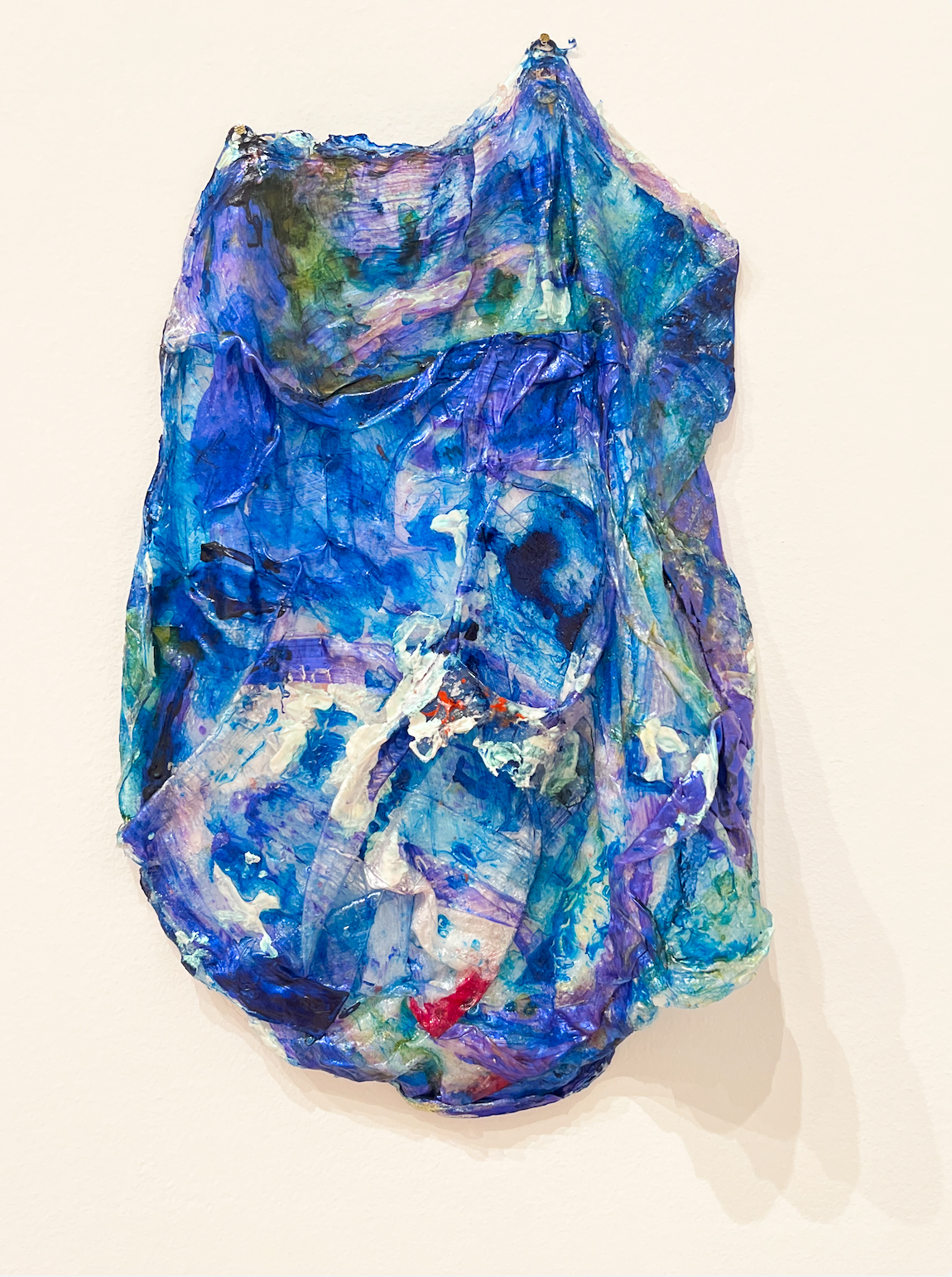
Suzanne Jackson
Red over morning sea, 2021Acrylic Suzanne Jackson’s suspended paintings push the boundaries of material and surface, built entirely from layers of acrylic, gel medium, detritus, and natural objects, like seeds from her garden in Savannah, Georgia. Since the 1960s, Jackson has experimented with acrylic, treating it not just as paint but as structure—“an armature for…
-
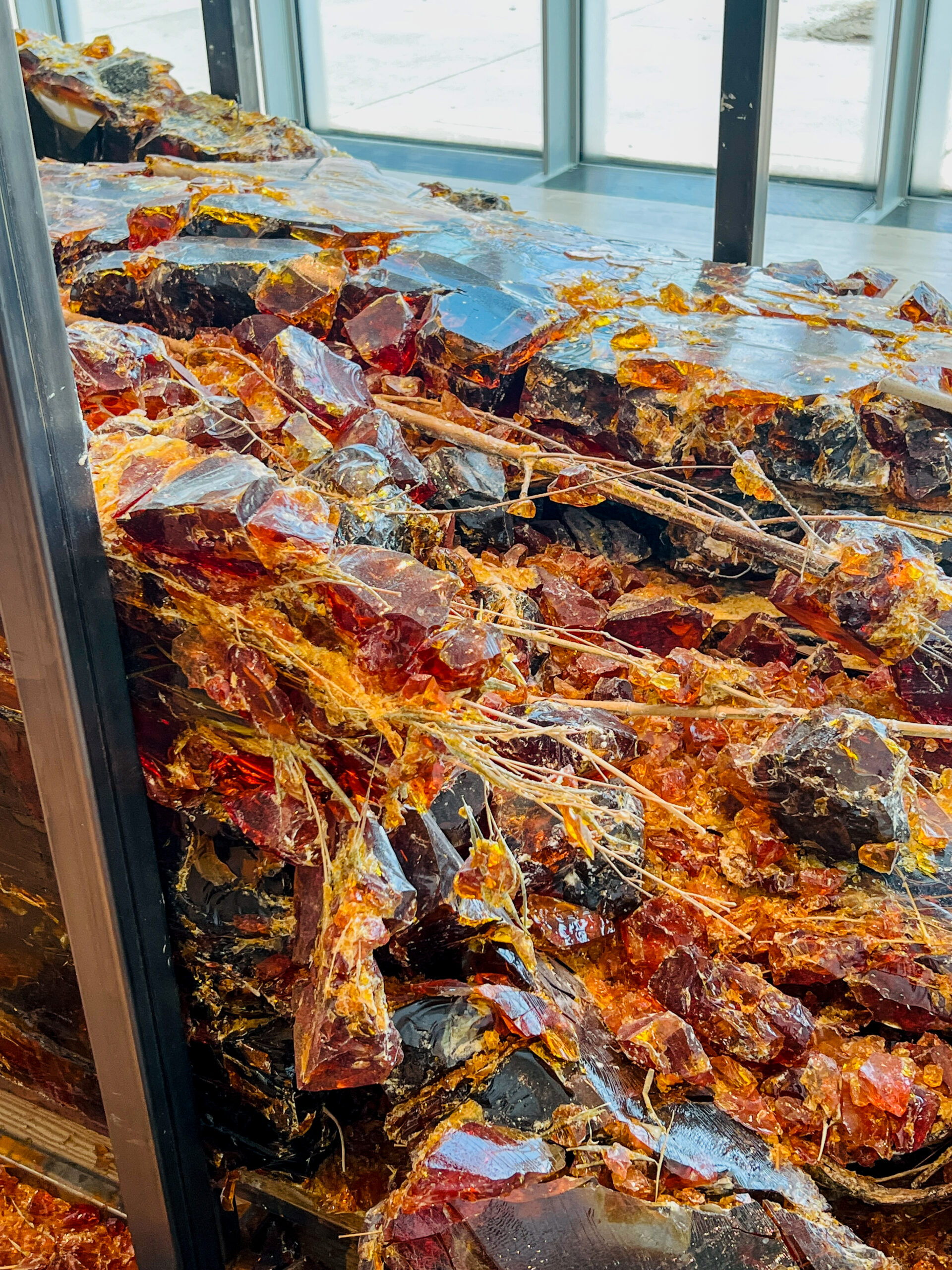
Eddie Rodolfo Aparicio
Installation view of Whitney Biennial 2024: Even Better Than the Real Thing (Whitney Museum of American Art, New York, March 20- August 11, 2024). Eddie Rodolfo Aparicio, Paloma Blanca Deja Volar / White Dove Let Us Fly, 2024. Photograph by Ron Amstutz Amber changes over time and the artist altered this amber to be less stable in the…
-
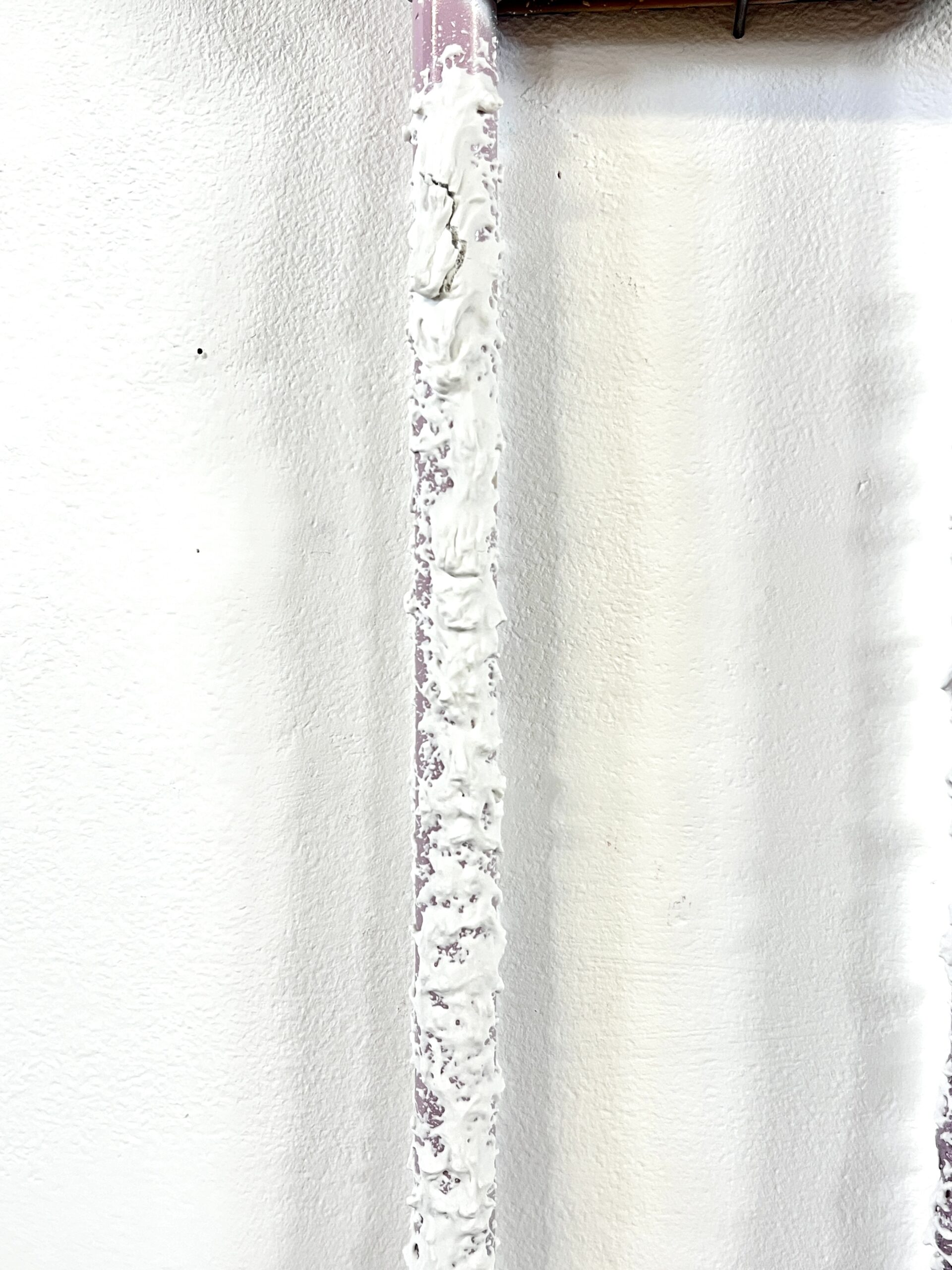
Popcorn Ceiling Texture
Ceiling Texture on painted metal crutch AppearanceChunky surface irregular surface Physical ChangesExpanded the line qualityMade a smooth surface roughChanged the color (CelluClay comes in different colors).Sharp to the touch due to the way it was appliedStrongest/most stable where the CelluClay was thicker and attached to itself. UtilityPotential to adhere things togetherCan attach to a…
-
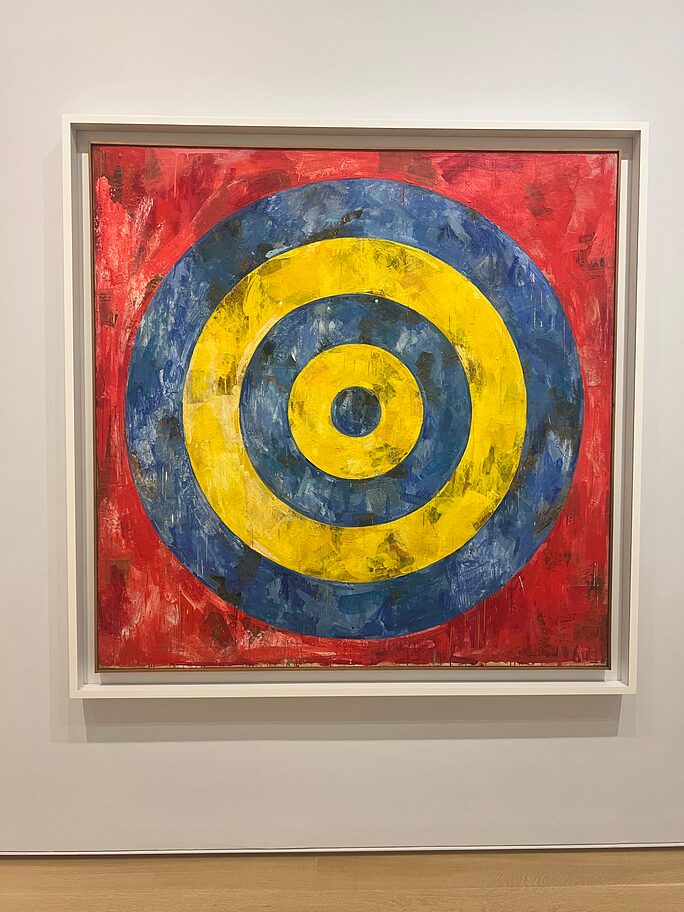
Jasper Johns
Target, 1961 Materials: Encaustic and newspaper on canvas Much more interesting up close. Can see layers of collage and the texture of the paint and wax. Shows possibility of utilizing the transparency of wax.
-
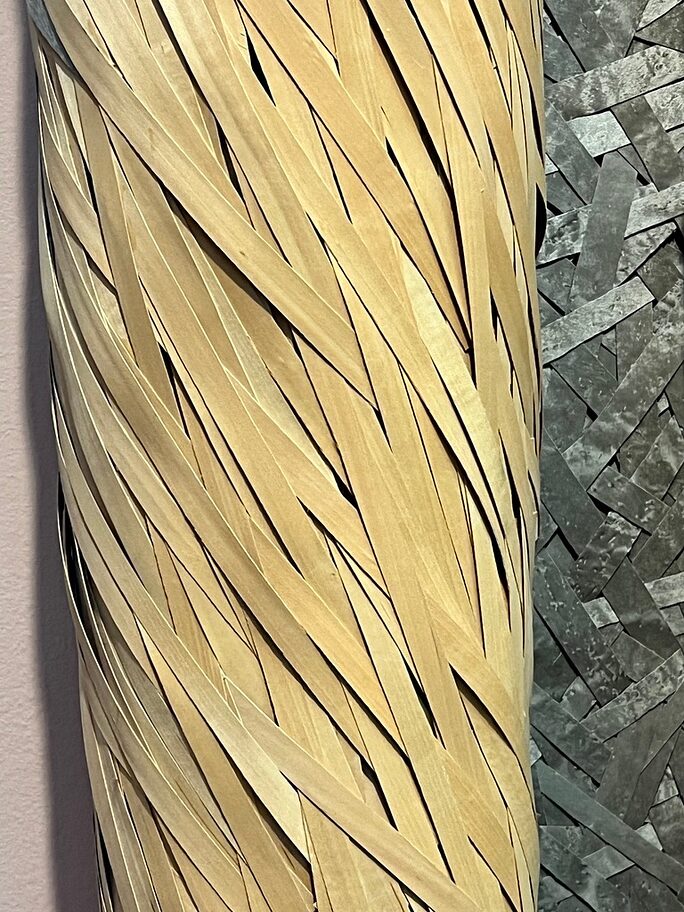
Barbara Cooper
Spathe, 1988/89 Materials: Wood Process: Weaving I love the way the texture comes from the shadow from the weaving and the different tones of the wood. Would be interested in weaving some surface treated wood; enamel, stains.
-
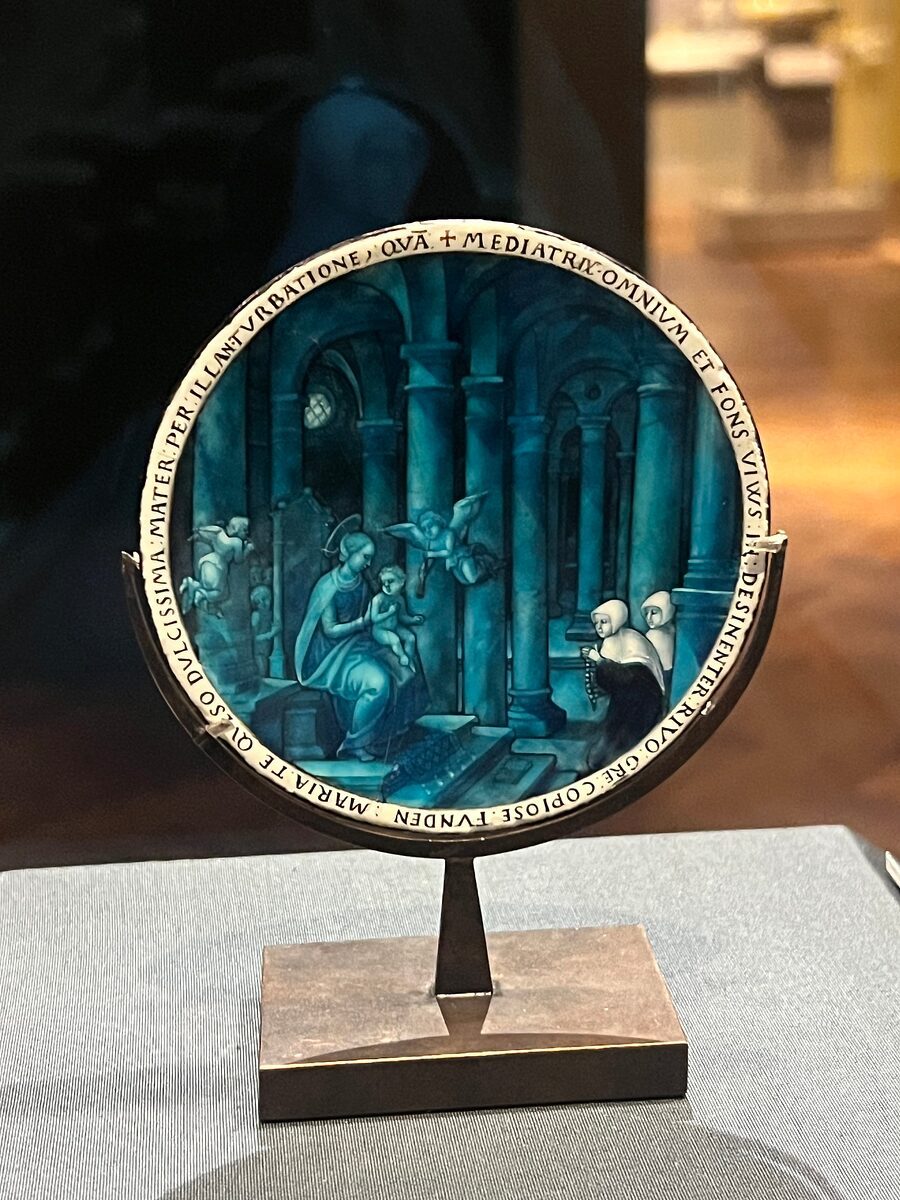
Léonard Limosin
Materials: Painted enamel on copper The enamel has a vibrant payoff and ability to be applied delicately. I have some thin copper sheets that I would be interested trying enamel on. The copper could also be engraved and sculpted, then painted on top.
-

Juliette Minchin
The Coffelou Sweeping, 2021 Materials: Wax, steel, wicks and LEDs Process: Covering steel in hot wax, letting it dry then melting over time Content: Ritual, facade, temporal, “plasticity, metamorphosis, growth, dissolution, destruction, deliquescence, degeneration“ Source: “Juliette Minchin | Artist on Gallery Viewer | Gallery Vi…” Galleryviewer.com, galleryviewer.com/en/gallery/384/roof-a/artists/5937/juliette-minchin. Accessed 26 June 2024. Ebert, Grace. “Inspired by…
-

Kevin Beasley
Untitled (Hollow), 2016 Materials: Resin, House dresses, kaftans Process: Dipping clothes into resin, forming and draping them while they dry. Ghostly figures, absence and implied presence
-

Celia Butler
Spunomi Prize, 2023 Materials: Synthetic hair, cast paper, plaster, foam, spackle, wax mediums, acrylic, paper straw Process: Possibly the light blue is painted foam or paper with cold wax medium mixed with a pink paint. Materials only include acrylic paint, not oil. “Treats.” Celia Butler, www.celiabutler.com/treats
-

Olivia Bax
All Ears, 2021 https://www.oliviabax.co.uk/?pgid=l1w0493g-43c2cdbf-d061-4669-9542-b41b65acfee2 Materials: Polystyrene, pipe, funnel, cardboard, newspaper, UV resistant PVA, paint, UV varnish Process: Unique process of paper mache. Interested in the rough texture and process of covering objects like a pipe and funnel with a uniform surface that transforms the objects.
-

Louise Bourgeois
Destruction of the Father, 1974 MaterialsWood, latex rubber, plaster, fabric Process“Bourgeois bought hunks of mutton and beef, decidedly on the bone, cast them in plaster and then covered the plaster with latex rubber” Latex over plaster, possibly cast onto the latex directly or adhered after the plaster has dried. Weaver, Ben. “THE LONDON LIST —…
-
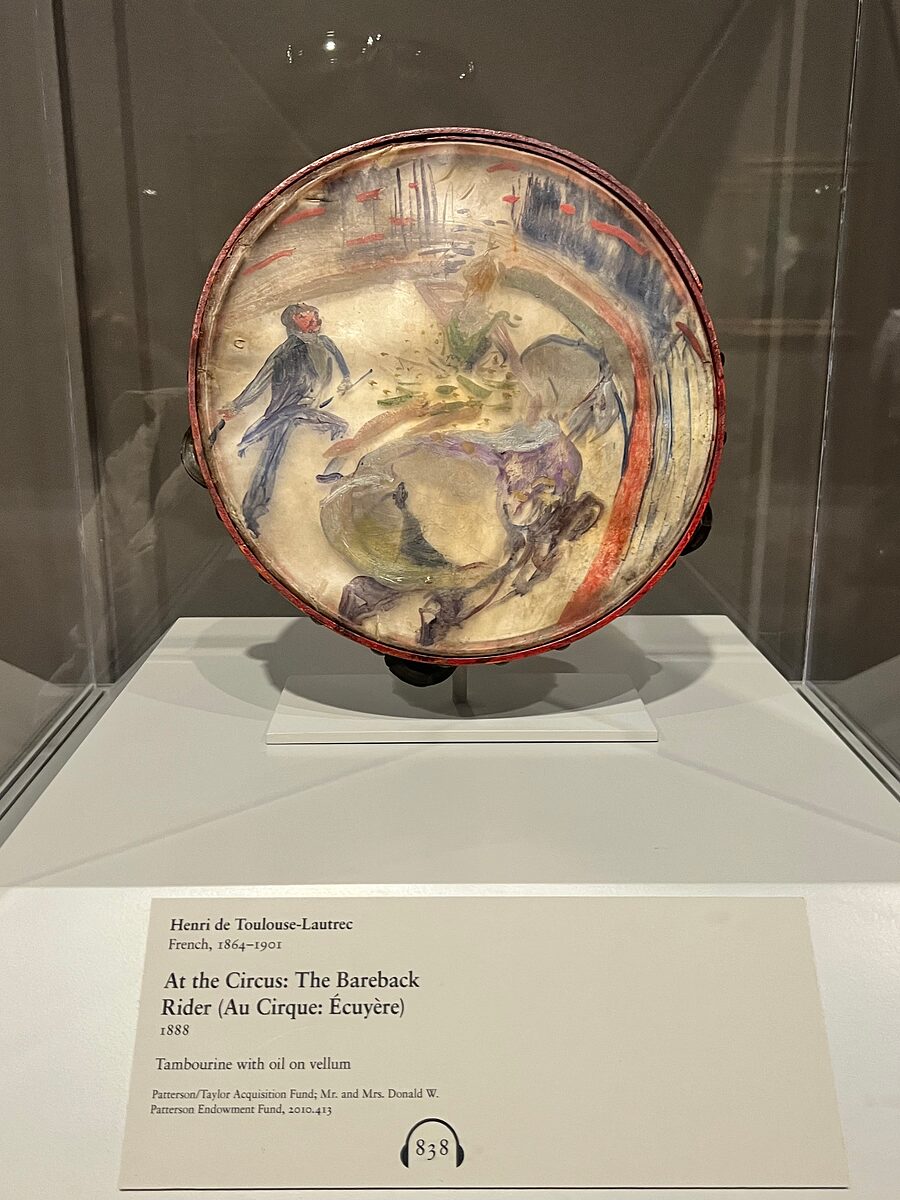
Henri de Toulouse-Lautrec
At the Circus: The Bareback Rider, 1888 Material: Tambourine with oil on vellum The possibilities of painting on found objects. Especially a tambourine which is basically a stretched canvas.
-

Masako Miki
The Cat That Lived a Million Times (Book by Yoko Sano), 2023 Materials: Patinated Bronze Holographic Entities Reminding of the Universe, 2023 Materials: Patinated bronze and claro walnut wood Curious about how she achieved these patinas on bronze and would love to ask Lloyd. A nice refinement to them and they look like different materials.…
-
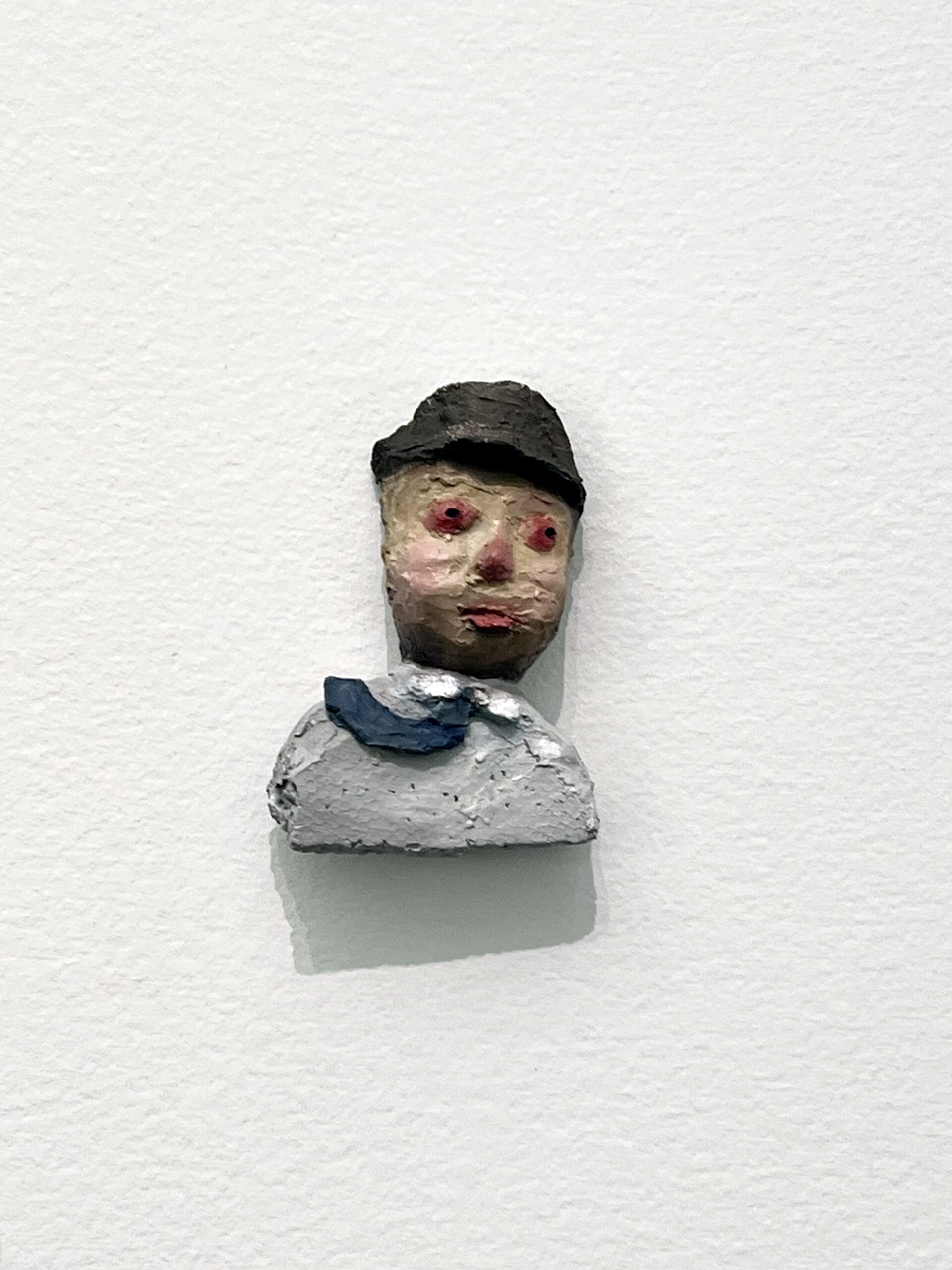
Nicole Eisenman
Untitled Materials: Oil paint on cast aluminum Eisenman applies oil paint roughly onto a surface, opposed to a smooth application that attempts to cover the aluminum. Eisenman uses the paint to emphasize the material and create an interesting texture.
-

Merett Oppenheim
Object, 1936 Materials: Fur-covered cup, saucer, and spoon, cup Process: Adhesive to attach fur Content: Surrealism, hard/soft, luxury Oppenheim uses fur to create a surrealist object: “a sculpture that joined incongruous parts to create an impossible, uncanny object” It brings about ideas of hard and soft, luxury and the tactile experience of using the objects.…
